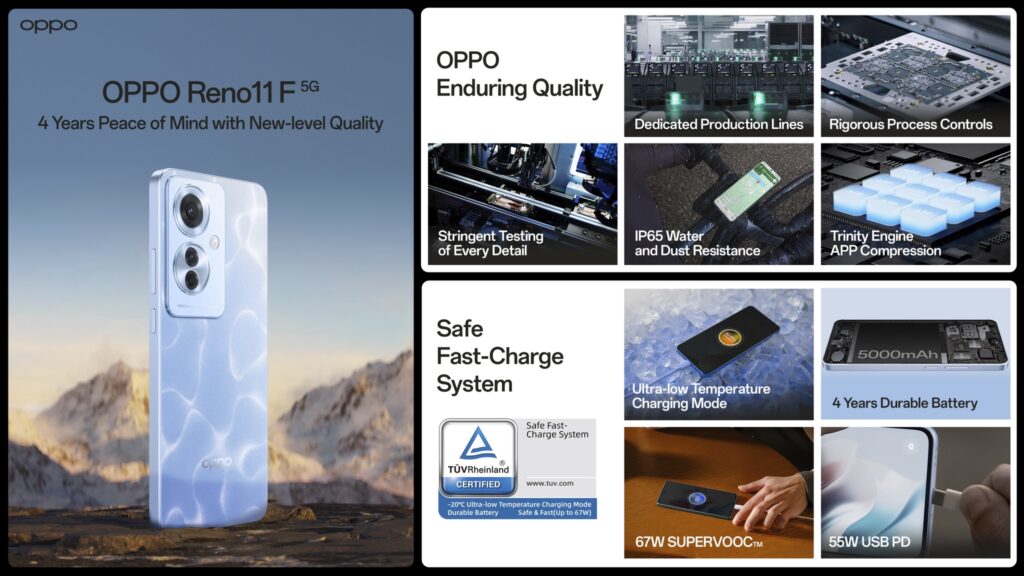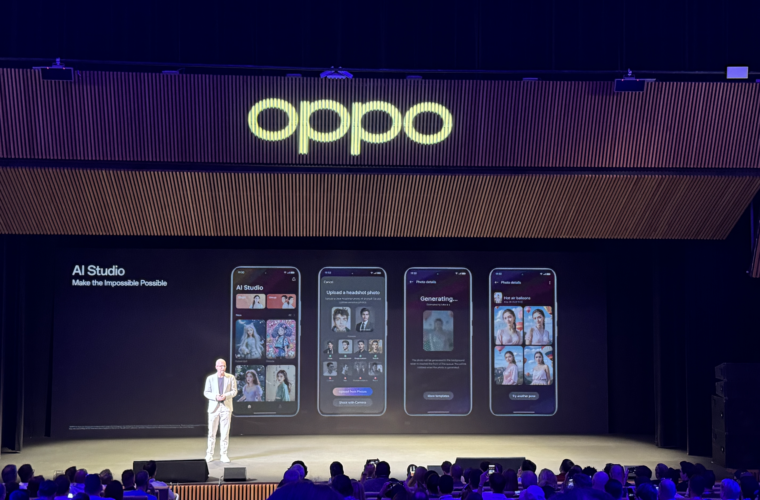We tested it in an unusual and spectacular scenery at an altitude of 3,500 metres
Oppo Reno 11F: Going high, indeed very high, to put the smartphone under stress and see how it reacts. With this in mind, Oppo took us to the snow-covered slopes of Courmayeur, an Italian alpine resort close to the French border and popular with mountain lovers to enjoy Mont Blanc, the highest peak in Western Europe at 4,810 metres. It was an unusual and exciting experience to walk on the glacier at 3,500 metres at Punta Helbronner, where the temperature was low even on a sunny day, and the air blowing in was cold and biting.
It’s a special scenario to test an extreme smartphone such as the Oppo Reno 11F, a mid-range model marking the return to the European scene of the fourth largest manufacturer globally, behind Samsung, Apple, and Xiaomi. Hindered by disputes with Nokia over certain patents, the Shenzhen-based company is ready to take back the scene, and the Reno 11F is just the first taste of a series of launches to come in the coming months.
Why a smartphone must last a long time
More than the future, however, let’s look back to the recent past because, at the top, I enjoyed breathing in the breathtaking surroundings, with an indefinite number of peaks enrapturing the eye in a landscape completely covered in white. Here, I took the opportunity to use the triple camera, which consisted of the main camera with a 64-megapixel sensor but without stabilisation, 8MP ultrawide, and a 2MP macro lens.
In bright conditions, the photos were good, although it is not a model that stands out from its competitors in the same bracket in terms of shooting quality but in terms of durability. In line with the trend of consumers changing phones at a slower pace than in the past – according to a GDK study in 2023, more than 65% of European users kept the same smartphone for more than two years, while 36% go beyond 36 months – Oppo promises four years of trouble-free use.
A feasible goal thanks to the rigorous testing with which Oppo makes its phones. Arne Herkelmann, Head of Product Management Oppo Europe, explained that the Reno 11F has undergone more than 50 production checks, 130 reliability tests, and 320 comprehensive tests to handle 100,000 volume button presses, 200,000 power button presses and 20,000 Usb-C connection and disconnection cases. Having had the chance to visit the Oppo factories in Dongguan, where I observed the perfectly oiled and largely automated assembly line that allows a smartphone to be packed from zero to a hundred in about 30 minutes, I can confirm the quality of production.





Fast charging at very low temperatures
The Reno 11F has its strength in longevity, although Oppo has assured three years of OS updates and security patches at the moment. However, one aspect makes the phone unique: its ability to charge quickly, even in extreme temperatures. Which is another reason why Oppo organised the high-altitude launch. At an altitude of 3,500 metres in Punta Helbronner, the company showed how, even at extreme temperatures, the Reno 11F reacts without hesitation. This is thanks to the Ultra-low-Temperature charging mode, which compensates for the slowness of charging caused by the cold with a CPU load for heating and uses a central frame and graphite plates for heat distribution. This solution preheats the battery to a level suitable for fast charging. A system that works in temperatures as low as -20C.
Ideal for autonomy and battery (replaceable)
The Reno 11F is equipped with a 5000 mAh battery, which, under normal conditions, uses 67W SuperVooc Flash Charge technology to charge the device up to 30% in 10 minutes, reaching full charge in 48 minutes. Oppo has provided a four-year battery protection plan. This guarantee means that within this timeframe from activation, the company undertakes to replace the battery free of charge when the capacity falls below 80%.
An interesting choice with which Oppo aims to distinguish itself in a price range full of valid alternatives, where the difference lies in the companies’ focus on one of the decisive elements in people’s purchasing decisions: display, materials, performance, camera and battery.
Square edges typical of the Reno range give a feeling of quality, confirmed at first touch and anything but taken for granted on models in this category. The dimensions are good, at 7.5 millimetres thick and 178 grams in weight, while the 6.7-inch display, with a refresh rate of 120 Hz, occupies almost the entire front where the edges are minimal. The Reno 11F features IP65 certification against water and dust, a Mediatek Dimensity 7050 processor, 8GB of RAM and 256GB of storage, expandable up to 2TB.
Available in the fine Palm Green and the more oriental Ocean Blue colours, with the cover included in the box and the 67W charger to be purchased separately (€39.99 but on promotion for €9.99), the Oppo Reno 11F is on sale for €369. It is certainly not the ideal smartphone for those who like to indulge in photos and videos. Still, it can be for those more concerned with the autonomy and fluidity of Android 14 in the ColorOS version, with the security of a battery ready to be renewed in case of problems.



